Believe it or not, there’s a true art and science behind writing effective blog headlines. It’s a skill that can make the difference between whether your blog succeeds or fails in the long run—because if your blog headlines fail to attract readers… you’ll have a difficult time making meaningful progress in your traffic growth.
Whether you’re just starting your blog or you’re already reaching an audience, if you’re unable to write a headline that effectively convinces readers to consistently click on your articles, come read, and decide to stick around for the long haul, then you’ll have an incredibly difficult time making a lasting impact in your blog niche.
How to Write a Headline for Your Blog Post: 26 Blog Headline Writing Tips
- Conduct Audience Research
- Use Psychographic Data to Make Decisions
- Use Persuasive Language in Your Headline
- Paint a Picture of What Readers Will Gain in Your Headline
- Avoid the Passive Voice in Your Headline
- Use Keywords to Write a Headline (for Search Engines)
- Align Your Headline with User-Intent
- Your Headline Must Answer the “What” Question
- Your Headline Must Answer the “Why” Question
- Your Headline Must Answer the “When” Question
- Your Headline Must Answer the “Who” Question
- Your Headline Must Answer the “How” Question
- Use Dates to Make Your Headline Feel More Current
- People Love Numbers: Use Them in Your Headline
- Don’t Sacrifice Clarity for Cleverness
- Your Headline Should Be Direct
- Observe Headline Length Best Practices
- Agitate the Problem and Offer a Solution
- Master the Skill of Word Play
- Add a Touch of Mystery
- Don’t Be Afraid to Ruffle a Few Feathers
- Use Software to Learn How to Write a Headline That Works
- Learn from Competitor Headlines
- Avoid Writing Clickbait Headlines
- Don’t Write Vague Headlines
- Never Use the Third Person Point of View in Headlines
Disclosure: Please note that some of the links below are affiliate links and at no additional cost to you, I’ll earn a commission. Know that I only recommend products and services I’ve personally used and stand behind. When you use one of my affiliate links, the company compensates me, which helps me run this blog and keep all of my in-depth content free of charge for readers (like you).
Need Catchy Blog Title Ideas?
Try my free AI-Powered Blog Title Generator Tool to get dozens of SEO-friendly headline ideas to make your blog posts stand out today.
So, why is it important to know how to write a headline for your blog posts? Let’s take a look at some research.
3 Data-Backed Reasons to Learn How to Write a Headline that Gets (More) Clicks
One of the mistakes many bloggers make when writing a blog post is to focus all of their attention and effort on just the quality of the blog post at hand—then slap a quick headline that feels right onto it and hit publish. After all, it’s the information within the blog post that readers want, right?
While that may be true… it doesn’t mean you can neglect the importance of learning how to write a headline (that’ll bring you those readers in the first place). If anything, the blog headline you write should receive as much love, attention, and research as the rest of your blog post.
Here are three data-backed reasons why blog headline writing is important:
- 80% of people will only read your blog headline (and nothing else)
- 95% of searchers never go past the first page of Google’s search results (so a headline that helps land you on page 1 is key)
- Studies show that a great headline has the potential to increase your traffic by as much as 500%
Not convinced yet? Here’s an analogy for you: Writing a weak headline for your blog post is like sticking a cheeseburger on the end of your fishing hook… no fish are likely interested in that. And if you can’t (first) hook your readers with a headline they’re interested in—and write a headline that’s strong enough to help make it to the first page of Google search results—those readers will never even come to your blog.
- Blog Headlines: What’s the Fuss? You’ve seen the data, blog headlines are a powerful tool in the grand scheme of attracting readers to your blog. However, if a headline is poorly written, getting eyeballs on your content is next to impossible. Aside from the data above, let’s cover a few more quick reasons why you should invest a lot into writing a headline for your blog posts. Even if you have hundreds of blog post ideas you want to cover, if you don’t know how to write a headline that captures the attention of readers, it’s highly unlikely that you’ll manage to consistently attract people to your blog over the months and years to come.
- A Great Headline Makes Your Blog Post Stand Out: There are approximately 6 million blog posts published every day. Standing out and grabbing attention will require that you do more than write an amazing article. You’ll have to write a headline that sticks out like a sore thumb.
- Strategically Written Headlines Improve Search Engine Rankings: With so much competition to appear on the top of search result pages (SERPs), you need to pull out all the stops to give your blog post a better chance of ranking. And that includes optimizing your headline for blog SEO best practices.
- Your Headline is a Personal Invitation: Your headline’s purpose is not just to tell readers what your blog post is about. More than that, it should serve as a welcome mat that invites readers to dig deeper into your content. To achieve this, you must write a headline that’s compelling to the right audience you’re trying to reach.
Alright, now let’s dive into my ultimate guide about how to write a headline for your blog posts—and get more readers to click on your content from both social media & search engines.
Need Catchy Blog Title Ideas?
Try my free AI-Powered Blog Title Generator Tool to get dozens of SEO-friendly headline ideas to make your blog posts stand out today.
Understand Who You’re Writing a Headline For
The very first step in learning how to write a headline for your blog posts is to understand who you’re writing for in the first place.
Knowing about who your audience is, will be instrumental in learning how to write a headline for your blog posts—in a way that’ll feel personalized to them. We’re going to start by breaking down how to write blog headlines that’ll make readers feel like you’re talking directly to them. Of course, with the result, your target audience will be more likely to click on your headline (and read your content).
So, how do you write a headline that feels personalized?
1. Conduct Audience Research
Audience research means studying up and learning about your target audience to get to know them better (which always helps if you’re within your target audience too). Some questions you’ll want to answer during your audience research:
- What can you learn from their key demographic data points? (Age, gender, race, location, employment & marital status)
- What’s their preferred style of language? (Clever, informal, formal)
- What types of blog posts do they like to read? (Informative, controversial, personal stories)
The answers to these questions will help you frame your headlines in a way that’ll appeal to your target audience’s preferred consumption style and format.
2. Use Psychographic Data to Make Decisions
Not to be confused with demographics, psychographics is the study of influential factors that determine a person’s behavior.
Psychographics include (amongst other things) the values, interests, personalities, opinions, lifestyles, and attitudes of your target audience. In other words, psychographics are the traits that drive why people do things—including clicking on a particular blog post headline over another right next to it.
To determine your target audience’s psychographics, ask yourself (and them) questions like:
- What are their interests?
- What are their goals (as about your blog niche)?
- What are their biggest challenges?
- What kind of writing tone do they relate best to?
- How are they going to consume your content?
If you want to write a headline that captures their attention, then use psychographic data to your advantage. It’s the key to getting into your readers’ heads.
Knowing your audience and giving them what they want, is the best way to write a headline that feels personalized. These are the kinds of headlines your audience will find most relevant in their world, and feel like you’re speaking directly to them.
Know the Goal of Your Blog Post (Before You Write a Headline)
Every blog post should have a clear goal in mind, which is why virtually all successful blogs are built upon a strong blog business plan that informs your content decisions at its foundation.
Now, what does your content goal have to do with writing attention-grabbing headlines? Turns out, it has just about everything to do with your headline.
Your headline should act like a mini Call-to-Action (CTA) that starts the reader’s journey toward your ultimate goal for the blog post. Here’s how to optimize your blog headlines to become a more persuasive call to action:
3. Use Persuasive Language in Your Headline
One of the most important skills you need to develop to learn how to write a blog headline is the art of persuasion. A headline should not only attract readers, but it also needs to convince them to take the next step and actually read your blog post.
And that’s why you need to use persuasive language in your headlines.
Persuasive language can come in many different forms, but put simply it translates into using words that appeal to your readers:
- Logic: What do your readers want to know? Strive to write a headline that demonstrates the value they’ll receive from coming to read.
- Emotion: What emotions do you want your headline to evoke? Write a headline that makes your readers feel compelled to click through and read more.
- Ethics and values: What do your readers value most? Write a headline that draws them in with an appeal to their values.
By appealing to these 3 core aspects of our built-in human nature, you’ll be able to learn how to write a headline that’ll much more easily draw readers into your blog posts.
4. Paint a Picture of What Readers Will Gain in Your Headline
Want to better understand how to write a headline that’ll drive more clicks? You’ll need to use your headline to paint a picture of what readers will benefit from as a result of reading your blog post.
For example, the headline in this image above (pulled from my roundup of freelance job sites), promises readers that they’ll be able to browse a list of all the best websites for landing a freelance job—and get more freelance work quickly.
The headline I wrote for that article is designed to very clearly explain what my readers will get by coming to the article—a list of freelancing sites to get work quickly. It’s a pretty straightforward headline, but attempts to immediately connect browsing job sites with the real ultimate goal my readers have in mind… getting more freelance work.
5. Avoid the Passive Voice in Your Headline: Use an Active Voice Instead
The active voice tends to be easier to understand when scanning through multiple different headlines and trying to decide which article is best for you.
And as long as you’re not running a news organization, the active voice will be a more natural headline structure to help capture the attention of your readers.
- Passive voice headline example: “Defendant Found Guilty by Jury”
- Active voice headline example: “Jury Finds Defendant John Smith Guilty for His Heinous Crimes”
Which of these headlines would you click on? To me, the active version is much more appealing, because it’s rooted in a current action that sounds like it’s happening right now.
Using an active voice in your headlines also has the added advantage of:
- Making your headline more exciting
- Subtly turning your headline into a more definitive statement (or command)
- Placing your readers in the moment and transferring your action-oriented mindset
As much as possible, try to avoid a passive voice when you write a blog headline, as the passive voice tends to result in weaker, less exciting headlines.
Having a plan and clear vision for your blog is crucial to knowing what kind of content you should be creating in the first place. It also helps immensely in writing blog headlines that’ll act as the call-to-action to get your audience to come and read your content.
Optimize Your Headline for SEO
As much as you’re writing headlines for real people, you also need to keep in mind that your headlines need to be optimized for search engines as well.
After all, for your target audience to find your content in the first place—it helps immensely if your blog posts eventually rank well in search engines like Google.
Here’s how to write a headline that’s optimized for blog SEO best practices:
6. Use Keywords to Write a Headline (for Search Engines)
One mistake many bloggers make when incorporating keywords into their content is to not give as much attention to the importance of keyword usage (in the right place) within their headlines.
Your headline is the first place you need to highlight your main target keyword phrase. Best practices for learning how to write a headline that’s keyword-friendly, include:
- Placing the keyword as close to the beginning of your headline as possible
- Avoid keyword stuffing, but consider including a related phrase in your headline
A perfect example of these two best practices is in the headline for this article you’re reading right now: “How to Write a Headline for Your Blog Post: 26 Blog Headline Writing Tips”
- The #1 target keyword phrase I’d like this article to rank for is right at the beginning (how to write a headline)
- An alternative version of my keyword phrase is also used toward the end of the headline (blog headline writing tips)
Not all readers will search for the same terms when they’re looking for answers online—so employing a slight variation of your main keyword phrase somewhere within your headline (if done tastefully without keyword stuffing) can be very powerful in the eyes of search engines like Google.
Use My Free Keyword Research Tool
Try my free AI-Powered Keyword Tool to get dozens of research-backed ideas for keywords & topics to write about on your blog today.
Another keyword-focused writing tip that I talk a lot about in my guide on how to write a blog post, is to include your target keyword phrase throughout your subheads within the body of your article as well. Just make sure they fit naturally into the context of your content.
7. Align Your Headline with User-Intent
To better optimize your headline for SEO ranking ability, be sure to write it with user intent in mind.
What is user-intent? User intent simply refers to understanding exactly what searchers are looking for (when they type in a search query) and meeting those expectations for what they’re hoping to find, with your headline and the rest of your blog content as well.
A well-optimized headline quickly shows search engines that your blog post has the answers their users are looking for. And if readers tend to bounce less from your blog post—or spend more time on your articles than that of competitors, then you’re on the right track. For example, in my guide about how to write faster blog content, the headline promises 10 actionable strategies to improve your writing practice.
As a result, your content has a better chance of being rewarded and ranked higher by search engines.
Write a Headline that Answers Your Reader’s (Burning) Question
Another fundamental need when it comes to learning how to write a headline is to make sure your headline answers a reader’s burning questions. Not in full, of course, but enough to show them that your greater blog post will give them all the information they’re looking for. To do this, your headline must answer the following crucial questions.
8. Your Headline Must Answer the “What” Question
What will your reader gain from clicking through and reading your blog post?
Above all else, the what should be clearly evident from quickly scanning the blog post’s headline. In my guide to building a content marketing strategy, the what (a content strategy) is extremely clear and concise right inside the headline.
Remember, people always want to know what’s in it for them first and foremost. And if you write a headline that can accomplish that objective, you’ll grab their attention.
9. Your Headline Must Answer the “Why” Question
Why should a reader choose to click on your article (compared to all the rest appearing in search results alongside it)?
Aside from showing your audience what they’ll gain from reading your blog post, your headline should also illustrate why they should read your post.
For example, the promise of my article that talks about whether or not you should blog, is to guide readers down the path of discovering their own why behind starting a blog—and whether or not they should, through a series of questions, reasons, and a free quiz).
10. Your Headline Must Answer the “When” Question
When should your readers click through to come and read your post?
Of course, the answer is now. That’s why you should write a headline that contains words that inspire a sense of urgency. Examples include words like now, today, instantly, and a whole host of others.
Take for example the blog headline I wrote for my guide about how to get a remote job—which frames the entire article around getting a remote job this weekend. Adding that timeframe to the headline makes my guide feel more attainable and arguably easier for readers to commit to.
Strive to answer the when question within your blog headline, by showing readers a time frame in which they can achieve the results promised by the blog post. If you’re writing a blog post in the weight loss niche, a good headline could be: “How to Lose Your Belly Fat in 21 Days (Without Sacrificing Your Favorite Food).”
11. Your Headline Must Answer the “Who” Question
Who will benefit from reading your blog post?
This is where knowing your audience well, also lends a helpful hand, as it’ll guide you in learning how to write a headline that captures the attention of a specific group of people. Using my roundup of the best books about blogging as an example, it’s very evident within the headline that this list of books has been curated specifically for bloggers to read (on a related note, check out my guide about how to write an eBook if you want to become the author of your own book one day too).
Another touch of personalization you can consider is the use of the word you inside your headlines. While it may seem like an ordinary everyday word, it can be surprisingly powerful in making readers feel like you’re speaking to them directly.
12. Your Headline Must Answer the “How” Question
How will readers achieve a particular result by reading your blog post?
Your headline should hint at how your blog post will help readers achieve the results you promise from reading the article. With the headline for my guide about how to make money blogging, I’ve achieved that by previewing how many ways to generate revenue are being covered within the article (as well as mentioning a dollar figure I’ve earned, to help boost the credibility of the piece).
This is why how-to articles are some of the most popular content formats out there today. In most cases, people are searching online for a way to solve a problem, find an answer, or perform a particular task. Therefore, your blog headline should clearly show that your post contains the solution.
Remember, as much as you’re creating content for your blog, the articles aren’t just for yourself.
Your content should always have the primary focus of serving your readers—and that means learning how to write a headline that clearly shows that.
Take the Scientific Approach: Write a Headline That’s Specific
As much as writing is more of an art, learning how to write a headline is truly more of a science.
Don’t worry though, as we’ve already learned here… it’s a science that’s relatively easy to understand and master. It may take a little time and repetition, but you’ll get better at writing blog headlines the more you do it. Here are a few principles you can follow to increase the effectiveness of your headlines by being specific.
13. Use Dates to Make Your Headline Feel More Current
The world is always changing so quickly that keeping up can be a struggle. Especially when it comes to blogging and internet marketing best practices—if you snooze for a minute you get left behind.
That’s why, if you want to learn how to write a headline that captures the attention of your readers, you’ll have to show that your article contains current and relevant information. One of the best ways to do that is to add a date inside of your headline—especially if the content is timely (like my list of the most relevant blogging statistics this year).
What if a new year rolls in? Simple! Just update your blog post with more relevant, up-to-date information, statistics, facts, case studies, examples, and of course… the date.
14. People Love Numbers: Use Them in Your Headline
Numbers are a great trigger to stop potential readers in their tracks as they scroll through the web looking for information. This is because numbers often promise:
- A specific outcome
- Clear structure (and a defined endpoint)
- Scannable content
Aside from my more list-focused posts that cover topics like the 137+ best business ideas or 72+ ways to make money online—another way to use powerful numbers in your blog headlines, is to showcase dollar amounts that are relevant to the topic at hand. Take, for example, this guest post I have on my blog about how to earn with Amazon affiliate marketing:
In essence, numbers are brain candy for people—they promise both order and logic, which is something our minds deeply crave—especially when digesting complex information.
15. Don’t Sacrifice Clarity for Cleverness
We all live pretty busy lives, right? Because of that, most people want things to be simplified for them—which includes the resources they read.
When you want to learn how to write a headline that gets through to your readers (without scaring them away), make sure it’s easy to understand at a glance.
While clever headlines may be cool and useful for some audiences and content genres, using them on content that’s designed to rank well in organic search results can increase your risk of losing readers to competitors that are being more straightforward in their blog headlines. This is especially true for those readers who don’t have the time to decipher the true meaning behind wordplay in your headline.
16. Your Headline Should Be Direct
Get straight to the point in your blog headlines. What’s your blog post about? State that clearly, quickly, and without room for confusion.
Your readers should immediately know what your headline means and get a clear picture of what’s being covered in your article. If they have to think twice about the meaning of your headline, or try and figure out what you’re attempting to say, you’ll lose them. A great headline doesn’t require much cognitive effort to understand.
So, be direct and get to the point as quickly as possible.
17. Observe Headline Length Best Practices
Believe or not, the length of your headline is an important factor to consider. Here are a couple of reasons why:
- If your headline is too long, it could get truncated (thereby losing impact and meaning)
- If it’s too short, it may lose its ability to drive action from your readers
So what’s the perfect blog headline length?
According to studies, the best-performing blog headlines have an average of about 6-12 words in them. That’s usually between 50-80 characters.
While it may be tempting to unleash all your creative energy in crafting a verbose headline, remember that there are also constraints on what’ll be displayed by search engines and social media sites.
Marry the two together (creativity and science) and you’ll learn how to write a headline that readers won’t be able to ignore.
Appeal to Emotion: How to Write a Headline that Caters to Reader Emotions
Research shows that humans tend to make more decisions based on emotion, than logic. In short, we’re often driven more by the emotions we feel, than any logical analysis of a particular situation.
When it comes to the basic drivers of our decision-making process today, they usually include:
- Ego
- Desire to succeed
- Inspiration
- Security and survival
- Curiosity
That’s why some of the best-performing blog headlines target these types of emotions. And you should too.
18. Agitate the Problem and Offer a Solution
Effective blog headlines agitate a problem and offer a clear solution. This could be a problem your reader knows they have, or even one they don’t know about until you point it out. To learn how to write a headline in this format, take this simple two-step approach:
- Introduce the problem in simple terms
- Hint at the solution in your headline
For example, many bloggers struggle with getting readers to their blogs (a known problem). The solution is learning how to drive traffic to your blog and experiment with what’s going to work best within your blog niche like I’ve broken down clearly in this headline:
Positioning the problem and your proposed solution together when you write a headline (and especially as you outline a blog post), promises relief for the reader—and thereby encourages them to dig into your blog post.
19. Master the Skill of Word Play
Writing an effective blog headline isn’t only about putting words together… it’s about being strategic in the way you construct those words.
Here are two common types of words you need to master (and use) when learning how to write a headline for your blog posts:
- Superlatives: These are words that take comparison to the highest possible level. Examples include words like: best, biggest, most, highest, baddest, prettiest, and so on. Both positive and negative superlatives are great for capturing your reader’s attention.
- Power words: Power words evoke strong emotions (like curiosity and excitement). Examples of power words include: save, easily, instantly, discover, capture, and so on.
So, the next time you write a headline for your blog post, try, and use words that strategically elicit an emotional response from your readers.
20. Add a Touch of Mystery
People are curious creatures, and we often respond to mystery with an instant reaction to want to learn more.
Appeal to that nature when you write a headline, and you’ll craft headlines that drive more clicks. A few simple ways to evoke curiosity in your blog headlines include:
Use Open-ended Questions
Open-ended questions are those that can’t be answered with a simple yes or no.
Write a headline that uses an open-ended question to lure readers into your content, as they’ll likely want to get the answer to that question.
Here’s an example of a headline that uses an open-ended question: “Informational Blogs: How Do They Actually Generate Revenue?”
Leverage the Curiosity Gap
The curiosity gap represents the space between what a person knows—and what they’d like (or need) to know. To leverage the curiosity gap in your headline writing, your headline will need to:
- State a fact the reader may or may not already know
- Highlight something they don’t know but would like to
Need an example? Check out the headline I use in my guide about how to start a blog:
In this example, “how to start a blog” is the piece of information, while the “and make money” aspect highlights something more readers want to learn how to do, but don’t yet have that knowledge. This sparks a lot of curiosity and leads to readers click in and read my post.
21. Don’t Be Afraid to Ruffle a Few Feathers
Everybody loves (or hates) a bit of controversy. And that’s why controversial headlines grab attention.
If it works well within your niche or for your blog name, don’t be afraid to ruffle a few feathers by writing a controversial headline. The trick, of course, is to understand your audience so well, that you’re able to steer clear of being offensive—while still providing a useful take that may run counter to the beliefs of some readers.
Great headlines create an emotional connection with your readers. Remember that the next time you write a headline for your upcoming blog posts.
Leverage the Best Headline Writing Tools and Technology
Technology has made life easier in more ways than one, including when it comes to writing headlines for your blog posts.
Let’s look at a few blogging tools that can specifically help when it comes to writing better blog headlines.
22. Use Software to Learn How to Write a Headline That Works
Using powerful algorithms and AI technology, there are a surprising number of great free tools that can help in writing more effective headlines.
The #1 tool I use for writing better headlines, is my own AI-powered blog title generator tool.
Blog Title Generator: Free Tool for AI-Powered SEO Blog Title Ideas
Try my free AI-Powered Blog Title Generator Tool to get dozens of SEO-friendly headline ideas to make your blog posts stand out today.
Because different headline writing tools use unique algorithms and data to score your headlines, they’ll each naturally give you different scores. However, they can all be immensely helpful in taking a pretty good headline you’ve already written—and supercharging it into a headline that’s much more likely to attract clicks & achieve higher engagement with your readers.
Another simple tool that’s also worth mentioning here, is WordCounter. This tool allows you to quickly see the number of characters (and words) being used in your headline.
Another of my favorites (and the one I helped build) is the Blog Title Generator Tool from RightBlogger—an all-in-one blogging toolkit made specifically for creators like you. It’s part of a full suite of free AI blogging tools, including keyword research, content idea generators, an article writer, and even a video-to-blog converter.
Try it out here:
👉 RightBlogger’s Blog Post Title Generator
23. Learn from Competitor Headlines
Another way to ensure you learn how to write a headline that captures attention is to check out your competition. Of course, you’ll only want to take a little inspiration from headlines that perform well, not duplicate them (which would instead be likely to lead to punishment from search engines).
Tools that can help you see the kind of headlines that are performing well (in your niche, of course) are a dime a dozen.
However, the top two competitor research tools I recommend for better blog headlines are:
These tools serve the main purpose of analyzing the best content on the web. By checking out the top-performing articles and blog posts for a particular topic, you can easily reverse engineer top-performing headlines based on what’s already doing well. Of particular note, when checking out the blog posts that get the most shares, note if the headlines are:
- Long vs short
- Listicles (10 Top Ways to Get Fit During a Pandemic)
- Instructional (How to Write a Blog Headline)
- Question-based or statements
Analyzing the blog headlines that are already out there, will help you better understand what your audience wants. As a result, you can design your headlines to align with their needs.
Tools are a great way to make your headline writing more efficient. Not only do they help speed up the process, but they’ll also help improve the quality and effectiveness of your headlines over time.
Avoid These 3 Mistakes (When Learning How to Write a Headline)
Alright, so we’ve covered a lot of blog headline-writing tips that you should follow.
Now, let’s highlight a few of the biggest mistakes you should avoid in your journey of learning how to write a headline for your blog posts.
24. Avoid Writing Clickbait Headlines
Have you ever clicked on a headline, only to be disappointed by the content inside? It’s a very frustrating experience.
The same way these bad clickbait headlines put you off, is the same way it gives your readers a negative experience if you try to employ these tactics with your headlines.
As much as it may be tempting to try and lure people into clicking on your headline, clickbait does more harm than good.
The problem with writing a headline that’s clickbait is that while they do often get people to click, the negative experience a reader has on the page causes you to lose integrity (and more readers will bounce off of the page once they realize they’re going to be let down by the content at-hand).
So how do you ensure your headlines aren’t clickbait?
- Avoid hyperbole: Hyperbole or exaggerated statements are the hallmarks of clickbait (avoid this at all costs)
- Don’t make empty promises: As much as your headline should be designed to offer solutions, make sure your promise is fulfilled in your blog post
- Be honest: Honesty is the biggest trust builder (particularly online), so the slightest dishonesty can cost your blog its readership and revenue
Another simple reason to avoid writing a headline that leans on clickbait is that Google explicitly frowns upon clickbait. As such, your content won’t rank as well as it otherwise should.
25. Don’t Write Vague Headlines
Vagueness is another quality problem that plagues many headlines.
As much as you may want to surprise your readers with a profound revelation in your blog post, that is by no means a justifiable reason to write a headline that’s overly vague (in hopes that readers will click through to try and find the answer to your vague headline).
Your blog headlines must clearly portray the content of your article if you hope to build lasting relationships with your readers.
26. Never Use the Third Person Point of View in Headlines
Most blog posts are not news articles. Because blog content is meant to connect you with your readers, it’s important that you avoid the use of the third-person point of view (i.e. he, she, they).
Instead, use the first (I, me) and second person (you, your) point of view as much as possible in both your headlines and throughout your blog posts.
Why? Well, the third-person narrative often distances readers from your message, as it makes them feel like outsiders looking in. First and second-person perspectives, however, make your readers feel like a friend—and that they’re involved in the process that’s happening right now on the page.
Just as there are best practices for writing blog headlines, these few mistakes must be avoided if you hope to learn how to write a headline that’ll bring you more readers.
How to Write a Headline That’ll Get Traffic: It Takes Work (but Pays Off)
Writing headlines that capture attention may be more of a science than anything—but it’s not rocket science.
The most important thing you need to understand deeply when writing blog headlines is your audience.
Developing a close relationship with your audience (and knowing what they’re looking for) will inspire the style and format of blog headlines you write. Add to this the other headline-writing tips I’ve broken down in this guide, and you’ll soon be writing better headlines & bringing more readers to your blog.
Remember that while writing the perfect headline may require time, effort, and multiple rounds of revisions, the results are certainly worth it.
Need Catchy Blog Title Ideas?
Try my free AI-Powered Blog Title Generator Tool to get dozens of SEO-friendly headline ideas to make your blog posts stand out today.

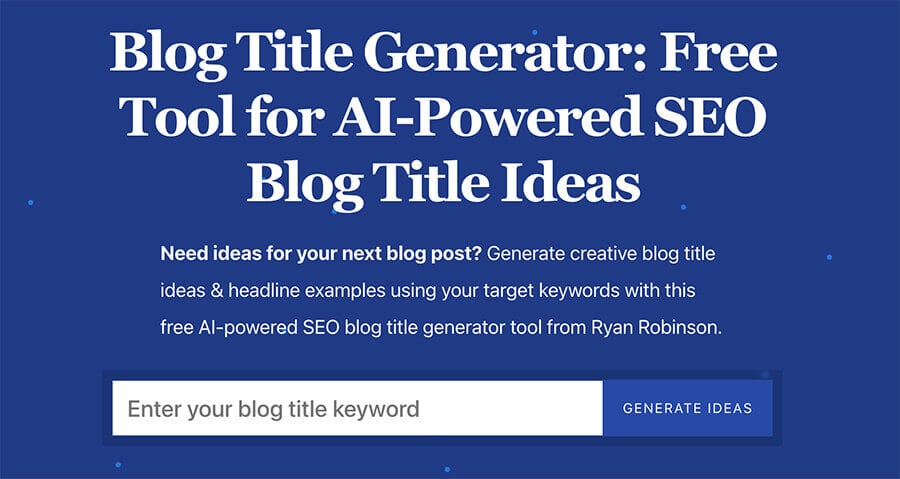

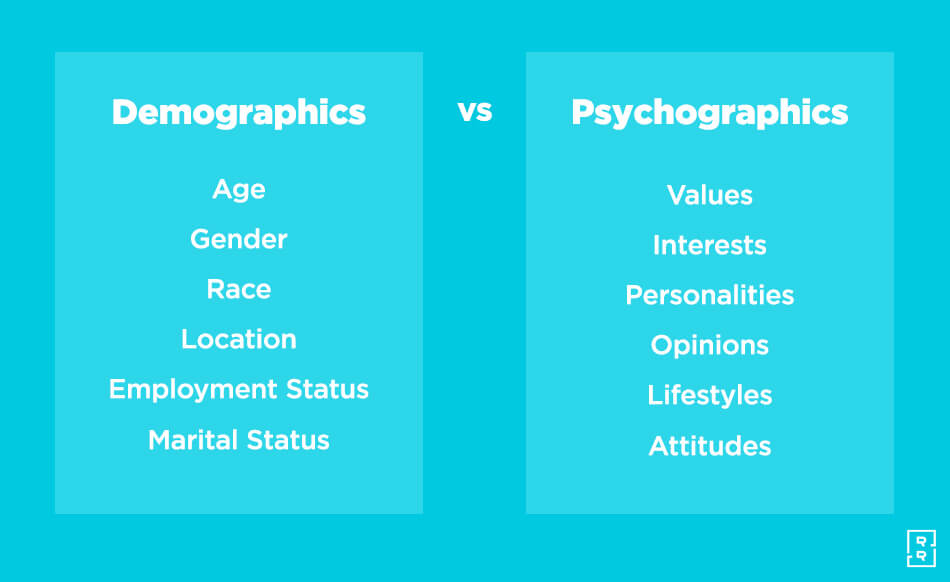


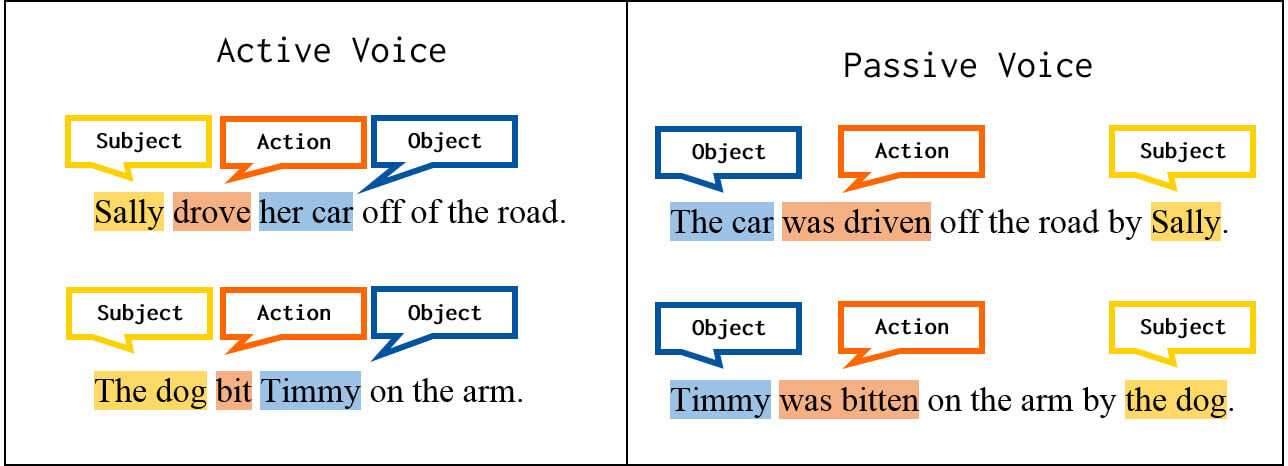

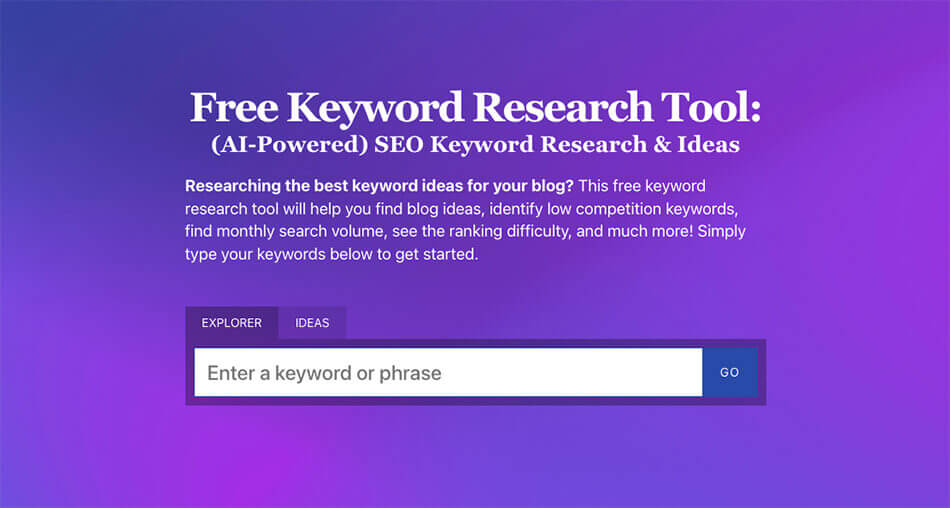
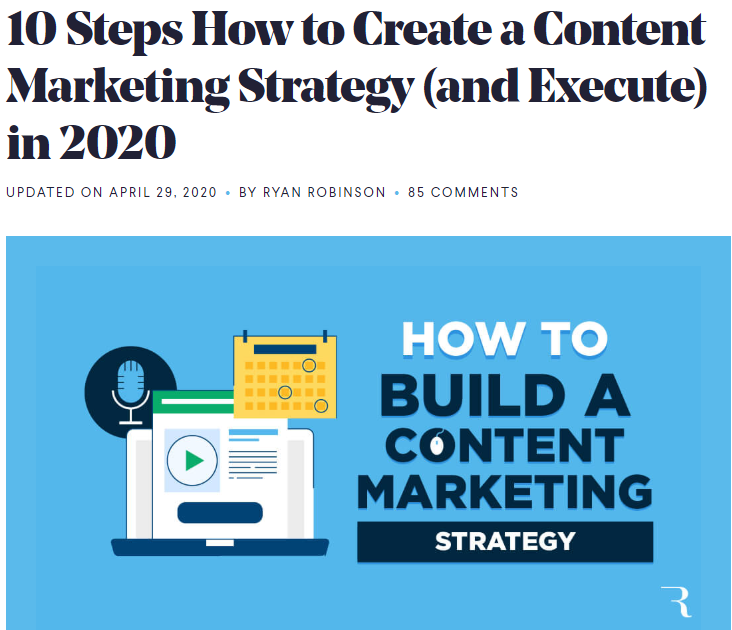
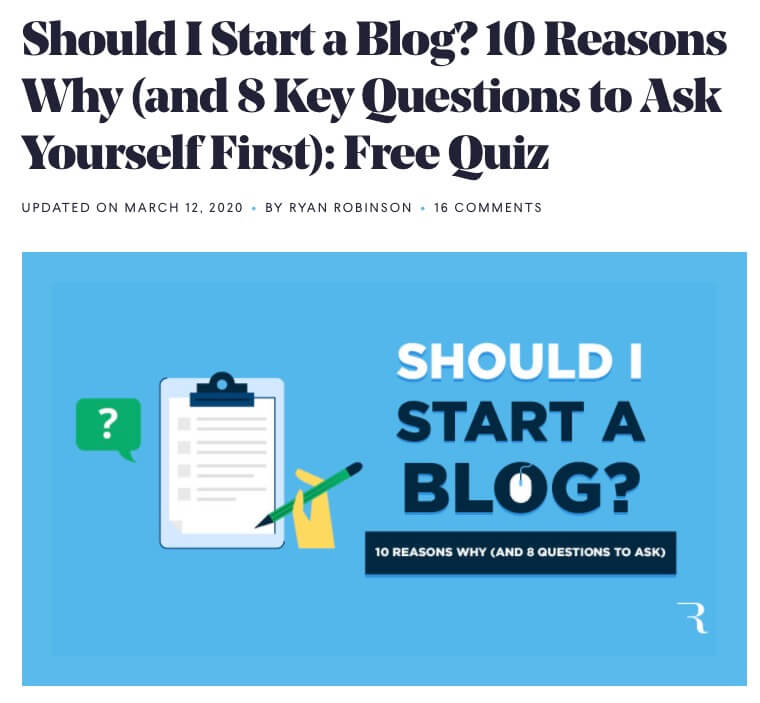
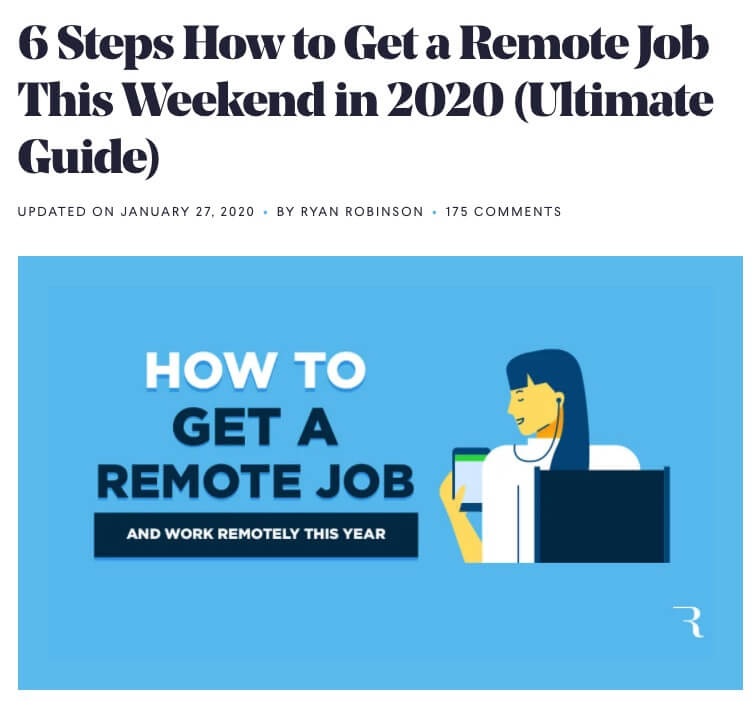
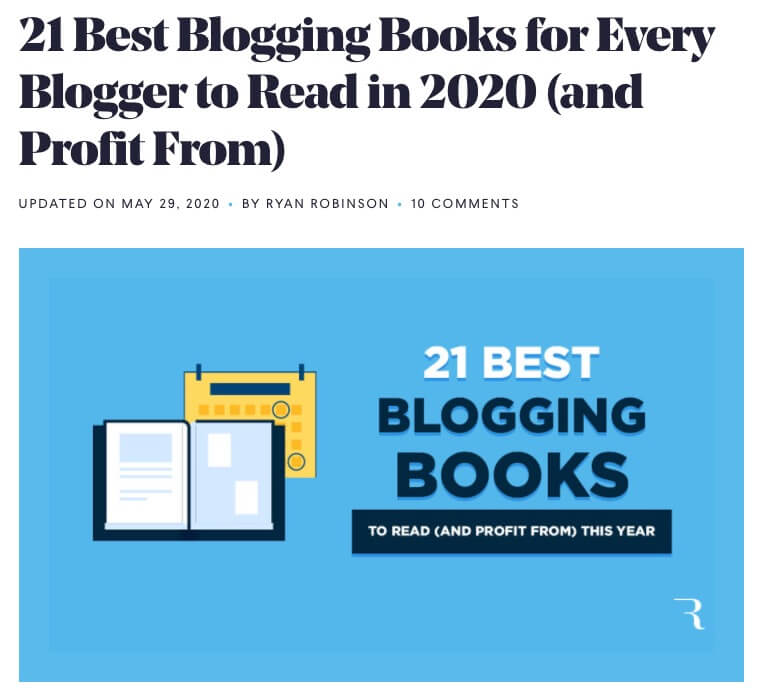
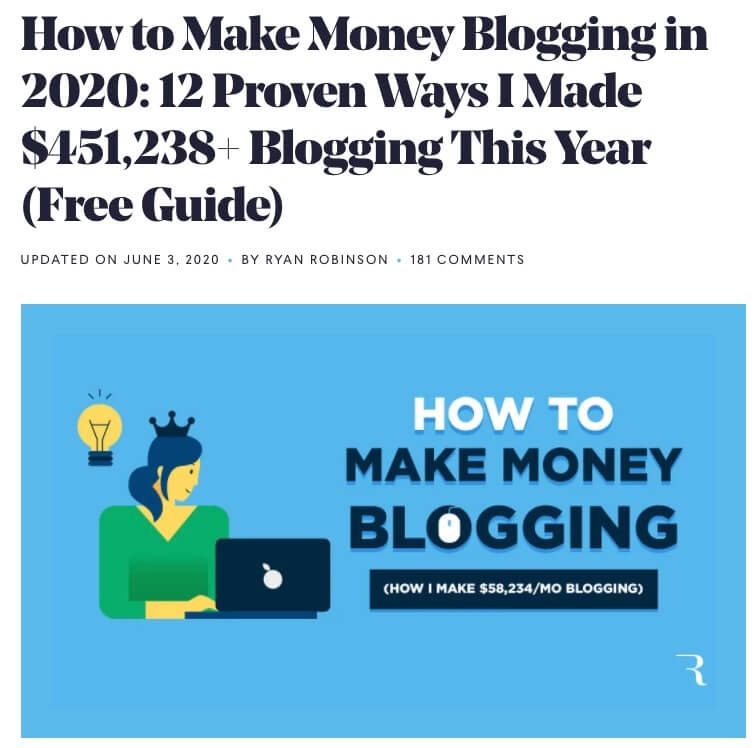
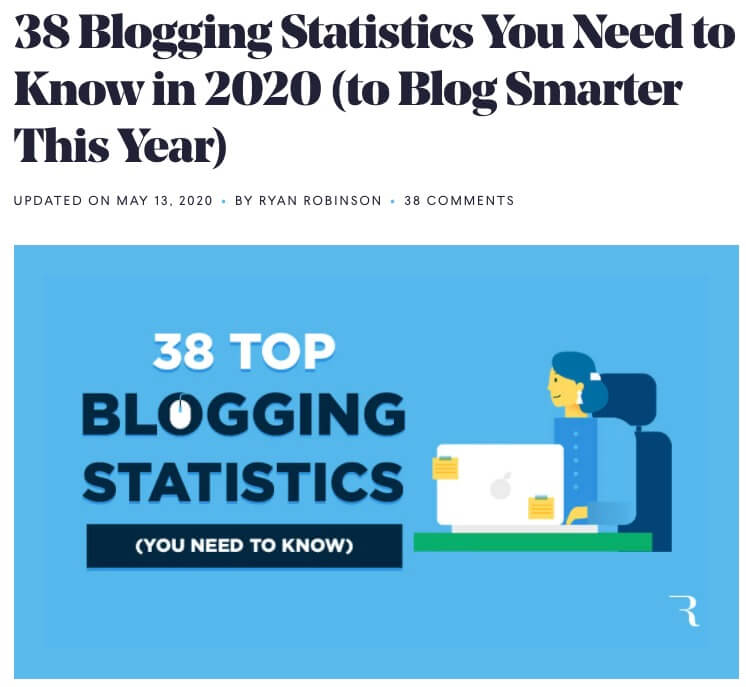


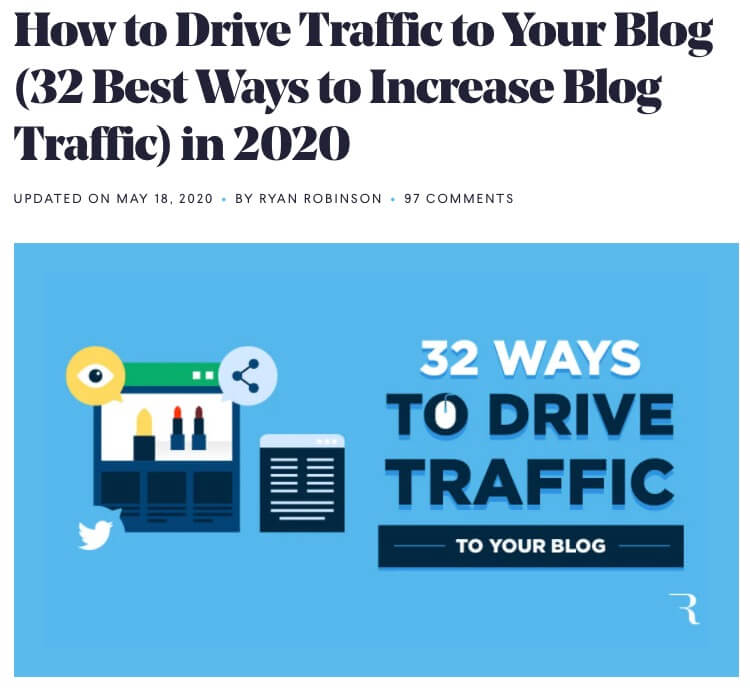

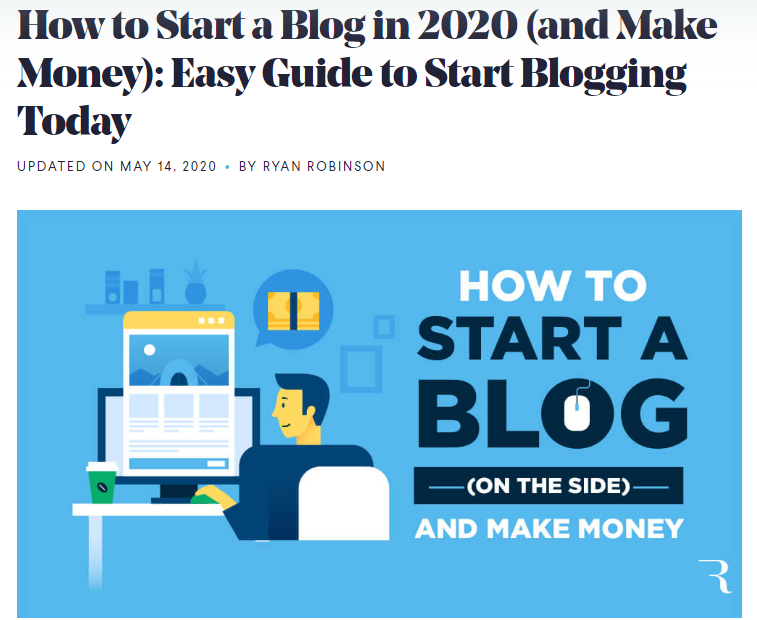

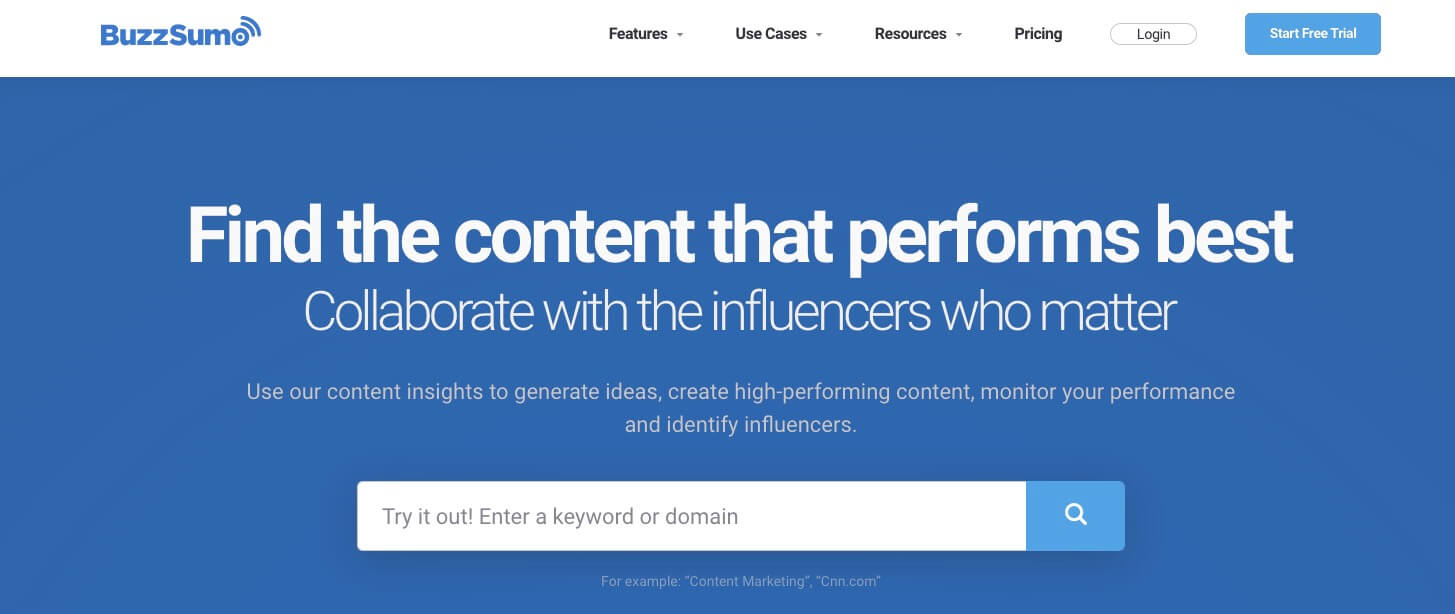
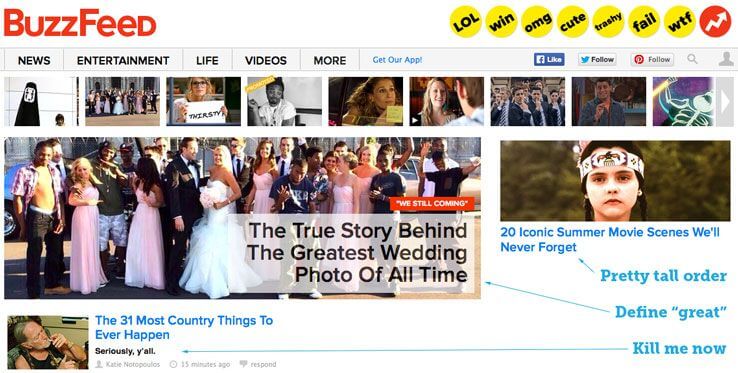

255 replies to “How to Write a Headline (That Captures Attention) for Your Blog Posts in 2025: 26 Blog Headline Writing Tips”
very nice article you have written
Thank you!
Sir you have posted very nice, your website looks best. I visit your website everyday. We are waiting for your website post. Thank you sir
Thanks, Vk!
I am a small poet
Wishing you luck, Himayra!
In the same way could you explain how to write an attractive content.
Yeah, I did right here in this guide to writing great blog content: https://www.ryrob.com/how-write-blog-post/
Thank you for sharing this complete guide with us on how to write effective headlines! I like how you mentioned that there are headline writing tools that we can use. However, does using these tools affect the uniqueness of your headline?
You’re welcome, Mec! I don’t think there’s a downside to using the headline writing tools I talk about in this guide—they’re automated tools, so nobody is sitting on the other side of them stealing your headline ideas 🙂
Hey Ryan
Well written
Please write headlines for my blog article
Break even point in accounting
Thanks, Shabana! How about this potential headline…
“How to Calculate a Break-Even Point in Accounting (Formula and Definition)”
Excellent site for a novice blogger. It seems like there is a lot to having a successful blog. So much to get right to stand out in the six million blog posts each day.
The blog title you can help me with is;
Unpack your positive ADHD skills and abilities
Glad to hear that, Jim! 🙏
How about this headline tweak… “10 Positive ADHD Skills (and Abilities): How to Unpack and Use Them Today”
“everything you need to know about incense ” would be my title would love to see your suggestion
Nice! This is a fun one. I’d go with something like… “X Things You Need to Know About Incense (Before Using It)”
Possible Blog Title:
3 Powerful and Important Lessons You Must Know About Online Course Creation
This is pretty solid already! Some alternatives you could consider…
“3 Things You Need to Know Before Creating an Online Course” or “How to Create an Online Course (3 Powerful Lessons to Learn)”
can you repeats your thing in an easy way?
I’m not sure what you mean, Ahmad. Let me know how I can help!
Writing an effective headline may seem like it’s easier said than done, but always keep in mind that it has to catch the attention of the reader. Thanks for sharing!
You’re welcome, Carola!
I loved your blog article, very amazing and thanks for sharing it!!! 🙂
You’re welcome, Khurram!